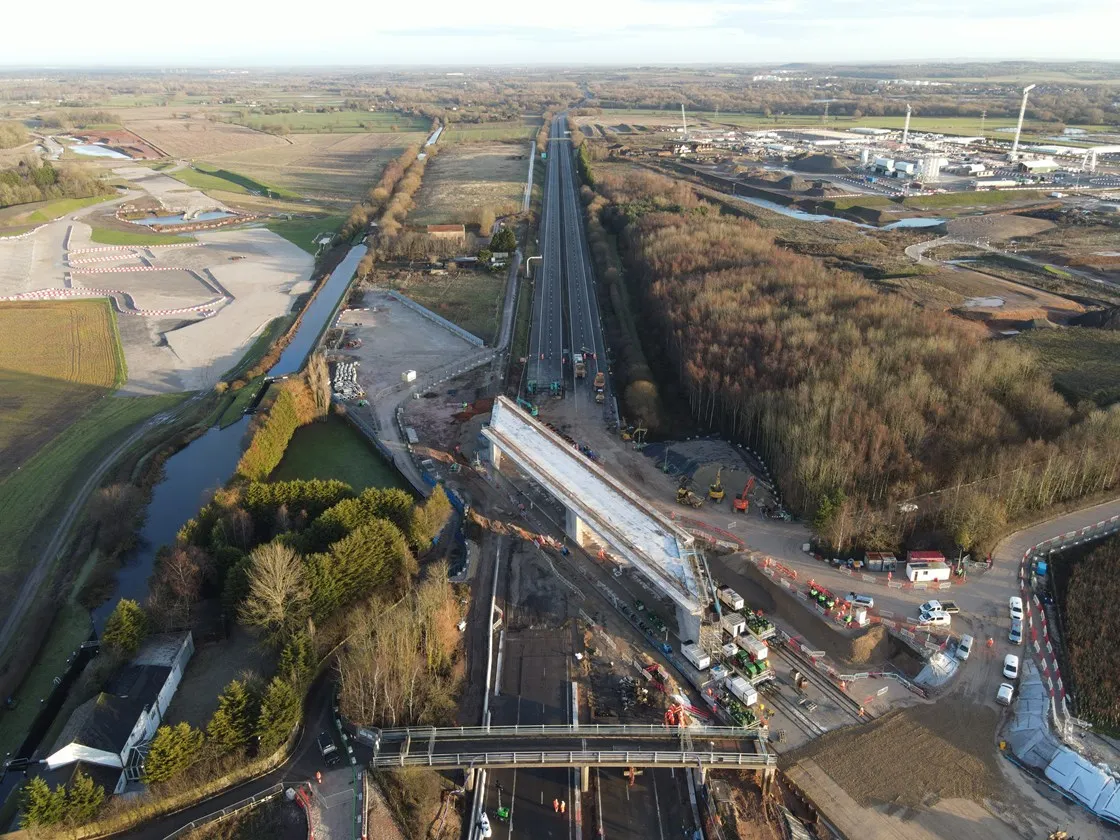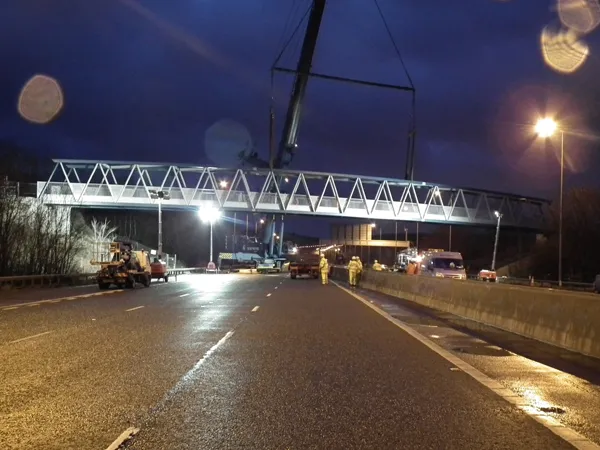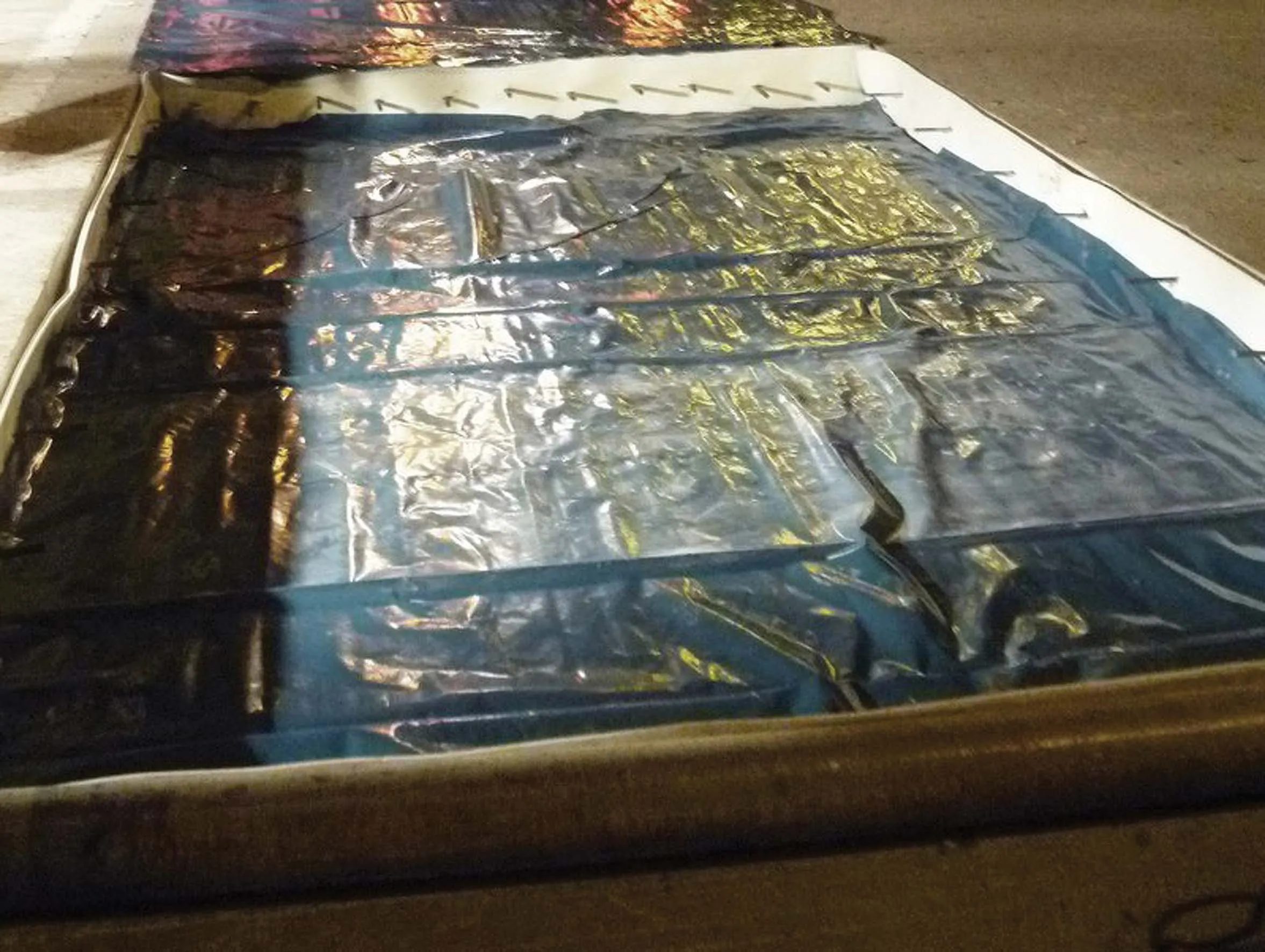
The joint venture of Balfour Beatty Vinci reports that it has completed over the M42 in England what it calls “the world-first box bridge slide”.
Workers slid the concrete shell of 12,600-tonne bridge a record 165m to position it across the M42 motorway in the county of Warwickshire. Around 450 people worked on the operation during the Christmas week, a quiet time on the roads. A section of the motorway section was closed for the 10-day operation.
The slide operation itself took only 48 hours at a speed of 4m per hour, explained Sasan Ghavami, Balfour Beatty Vinci's’s construction director for the project. “We’ve used innovative construction techniques and worked tirelessly throughout the Christmas period to move this 12,600-tonne bridge over the M42 – all done with the aim of keeping [traffic] disruption to an absolute minimum.”
Over the past six months, the giant 86m-long structure was constructed on land next to the motorway. It was developed by a design joint venture of Mott MacDonald and SYSTRA, working on behalf of Balfour Beatty Vinci. It has a base, three walls and top slab.
The sliding mechanism, designed by specialist civil and structural engineering company Freyssinet, allowed the box to be pushed into place over the motorway on a guiding raft over a distance of 165m. This construction method allowed it to be shifted into place in one movement, resulting in only two one-week closures of the motorway over a 12-month period, dramatically reducing disruption for road users.
On completion, the whole structure will total around 190m in length and will carry HS2 – High Speed 2 rail line - over the motorway.








